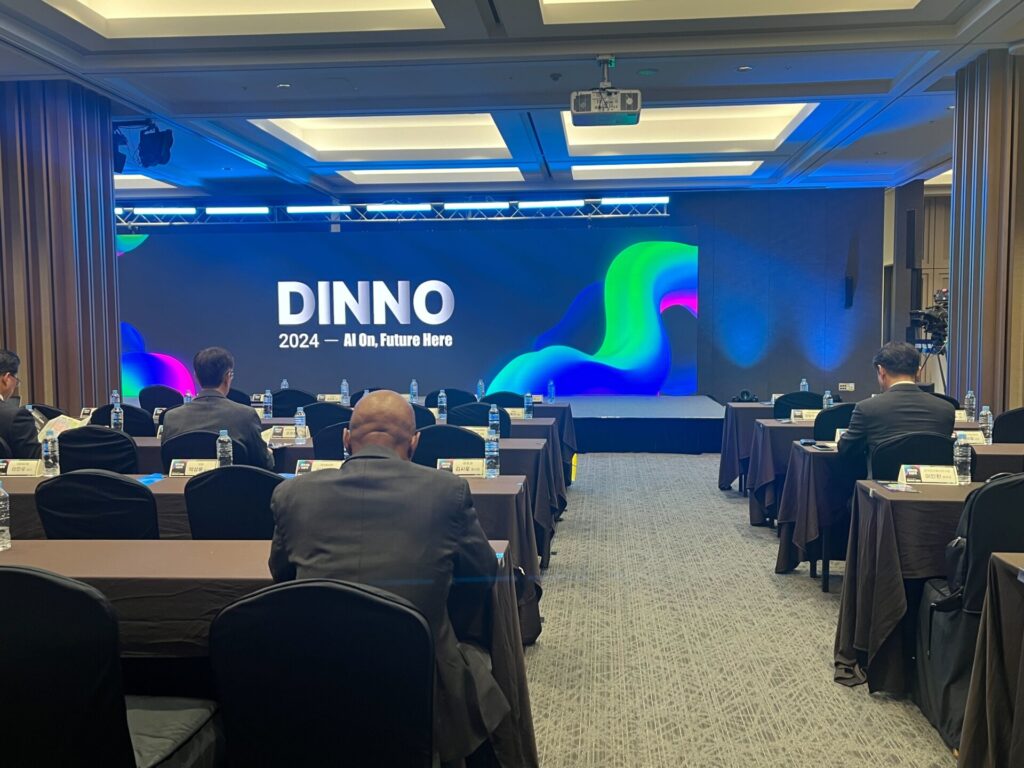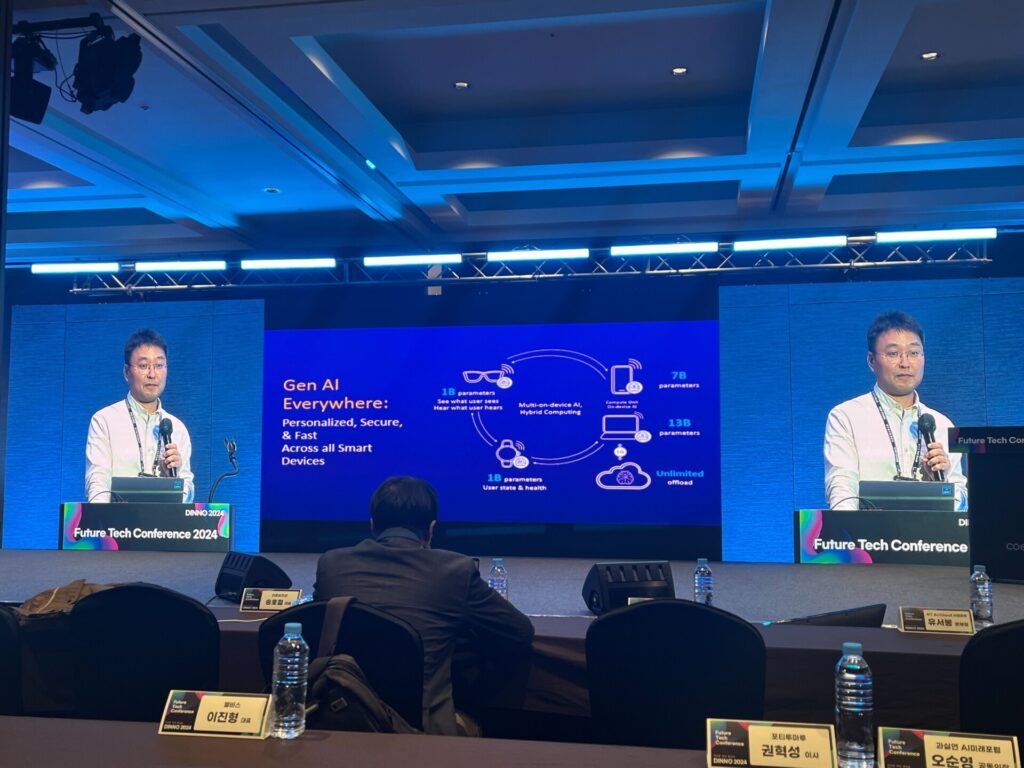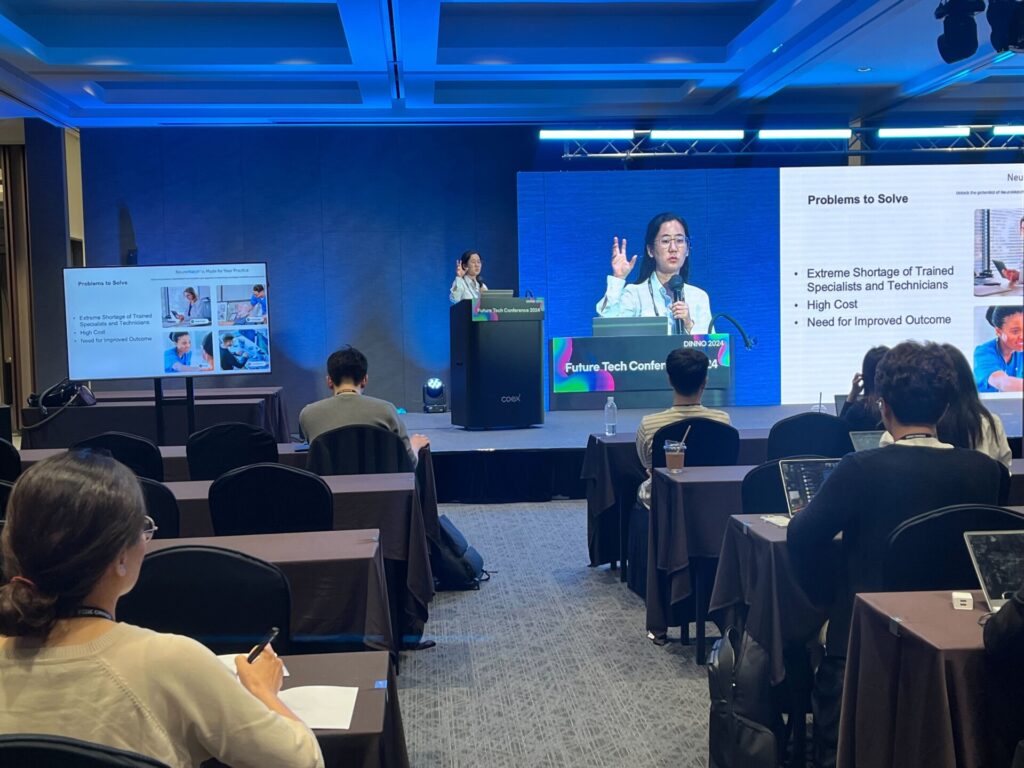


AI Inside, AI Everywhere

In the digital world of zeros and ones, AI is a crucial driver of significant change. With the prevalence of advanced digital devices, the integration of AI technology is enabling the development of “thinking computers and talking smartphones.” To showcase the advancements in digital technologies, Korea is hosting a specialized expo on digital innovation.
DINNO 2024 is an exhibition that will showcase the digital technologies of the future, including AI, quantum computing, cloud technology, digital healthcare, robotics, mobility, and security. The event will take place from October 10th to 12th at COEX in Seoul, Korea, and will feature 300 exhibitors and 500 booths from leading domestic and international digital innovation companies. The subtitle of the event is ‘AI On, Future Here’. The venue is divided into two main sections: the exhibition and the conference, and it offers a unique space for attendees.
The Future Tech Conference showcases the future innovations that are already here. On the first day, AI experts from various fields gathered to deliver keynote sessions under the theme “AI, Transforming Business.” All the lectures were based on the common premise that advanced digital devices are changing our daily lives and industrial structure.
Gen AI Everywhere

“The future will eventually be centered on multimodality,” said Chulho Chung, managing director of Qualcomm CDMA Technologies Korea. “The innovation sparked by generative AI is expanding beyond text and language to multimodality. Devices equipped with it will become part of our daily lives. In particular, Qualcomm Korea is prioritizing XR Glass as the next major innovation in device technology. Chung illustrates XR Glass as a 100-inch TV screen placed right in front of the user. The TV is frighteningly realistic, and you can see 360 degrees, so the range of vision is vast. Qualcomm plans to bring this to new service forms, such as immersive sports and entertainment. On-device AI will dominate our lives, from mobile, smartphones, smartwatches, PCs, and XR glasses.
Robots create mega-digital cities

When the same event occurs simultaneously in both the real world and the virtual world, it is referred to as a ‘digital twin’. What’s interesting is that robots are now enhancing this synchronization by moving between these two worlds. NAVER Labs leader Lee Dong-hwan refers to the connection between the real world and the digital twin as “Spatial Intelligence”. The role of robots in this context is to navigate the real world, gathering location and image data. This data is then processed into a three-dimensional map, which is then colored and made to resemble the real world. This technology can be used to create digital replicas of cities. For instance, NAVER LABS captured 25,000 aerial photographs of Seoul and used them to generate a three-dimensional model, creating a smart city. In the world of digital twins, we can simulate disasters like floods and conduct civil engineering projects. Lee mentioned that they are developing robots with AI capabilities. It seems that we are not far from the day when a mega-digital city, managed by multiple centrally controlled robots, will become a reality.
See the invisible

“Do you have a family member with a brain disease?” asked Jin Hyung Lee, CEO of LVIS, a US digital healthcare company. LVIS has developed NeuroMatch, a web-based solution that enables doctors to diagnose and treat brain diseases by collecting information from patients non-face-to-face. To address brain diseases, communication with the brain wirelessly is necessary. However, understanding the brain’s algorithm is challenging, as it is an unknown area. Therefore, LVIS decided to create a digital twin of the brain. NeuroMatch can import a database of patients into an automated platform, accurately diagnose the patient’s condition through the digital twin, and automatically generate reports on the patient’s condition. LVIS focuses on patients with ‘epilepsy,’ a condition that affects 65% of people with brain disorders worldwide, as it is a complication of autism or dementia. Now, patients with brain disorders can consult a doctor anytime, anywhere, with the help of artificial intelligence. AI sees the invisible.

